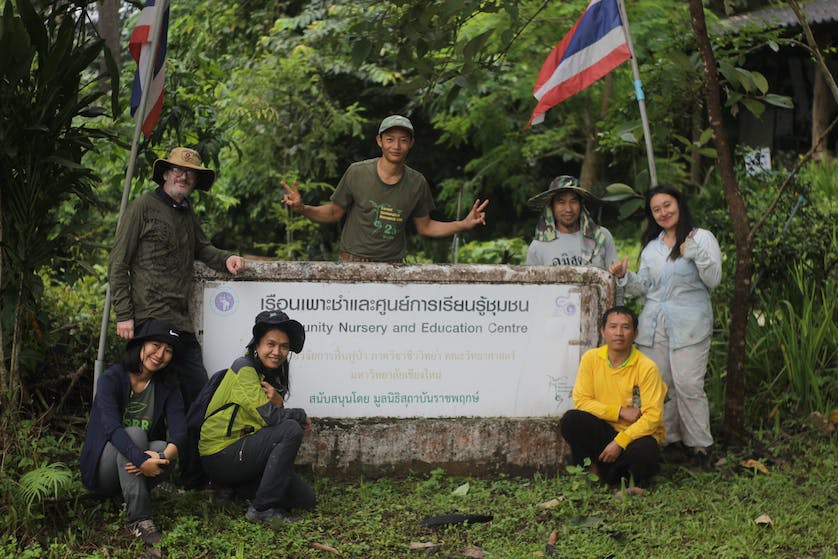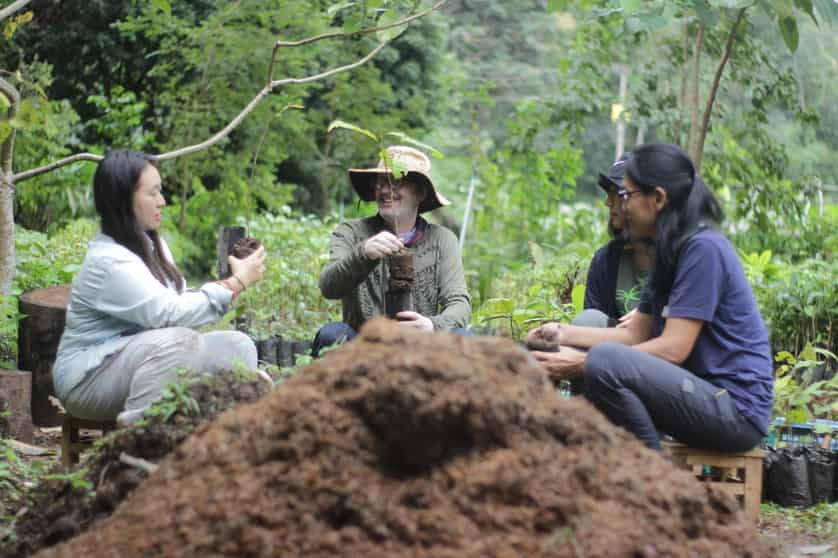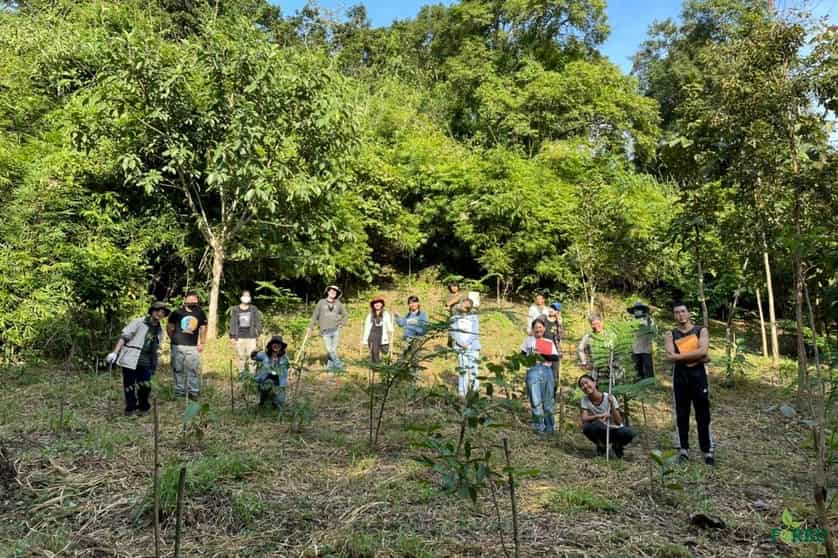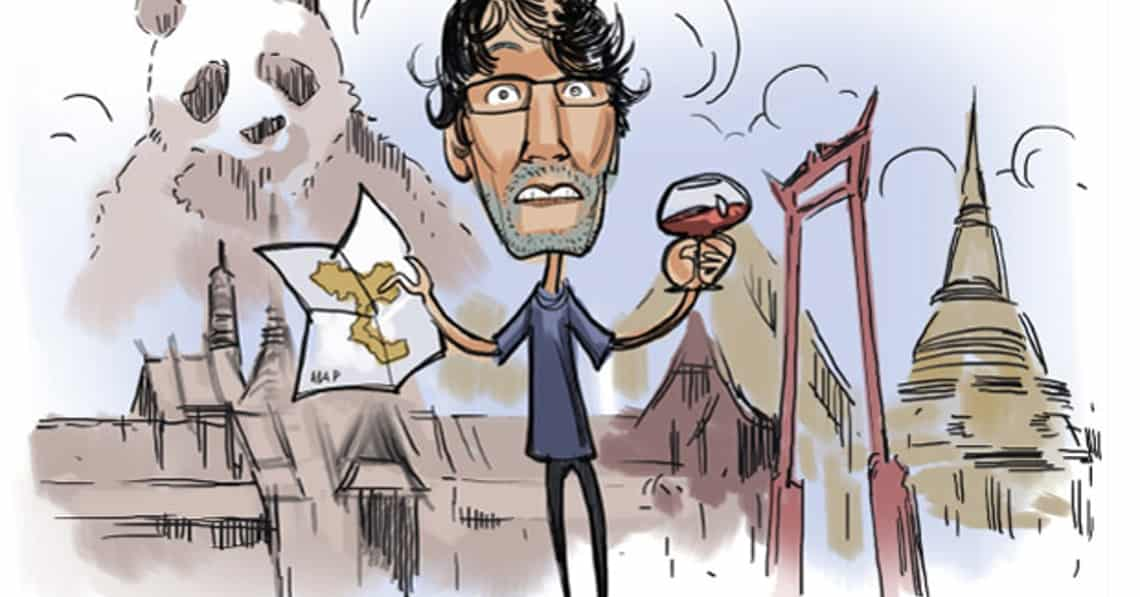Buzzing up Suthep Road, wearing every long-sleeved top I own, it is one of those bright, crisp, cold mornings that happen for a few weeks each year up here in the North. Road-side stalls sell exotic breakfasts; girls fix their hair in motorbike mirrors as the boys try to inch forward in anticipation of red turning green on Canal Road. The golden spire of Doi Suthep’s sacred temple sits perched on the mountain, shiny as a crown.
I turn into the university and pass a sign reminding me to ‘Wear Helmet 100%’, scoot around a roundabout – a piece of road design so rarely employed on the roads of Thailand I have almost forgotten who has the right of way – and pull up in front of the Faculty of Engineering.
But it is a group of ecologists and biologists from the Faculty of Science I am here to meet. We are to spend the day doing a spot of tree planting with the Forrest Restoration Research Unit. Some quick hellos and we are in the back of a pick-up with gardening tools and a stack of lunch boxes heading out of town into the hills.

I am joining the FORRU education team for a day of potting and planting in the mountains an hour north of the city where the project has its base. A nursery with a rustic classroom surrounded by swathes of seeds and saplings.
We listen to a short lecture. It turns out reintroducing indigenous trees is hard work. Aliens like pine would thrive on the moon, but the local saplings, as well as having to compete for space and light, have to contend with vines intent on murder by strangulation and all manner of bugs and grubs munching on them. Thriving foreigners and struggling locals – it seems that reforestation of the mountains really is an uphill battle.
Loaded with tools and buckets brimming with fertiliser, it is a short, muddy trek to a ravine where plots of newly planted native trees require a sprinkling of phosphate around their roots to give them the edge. I ask what some of them will be when they grow up and get an enthusiastic explanation. This one, for example, will bear fruit that can be used as a soap. That one is an excellent antiseptic.
The Forest Restoration Research Unit has been around since 1994, a group of ecologists and research students; FORRU’s not unambitious mission statement is to carry out research to develop efficient methods to restore tropical forest ecosystems for biodiversity conservation, environmental protection and carbon storage. The philosophy is to actively involve local people and communities who live in and around the tropical forests – to develop a sense of ‘stewardship’ of restoration projects.
After lunch, it is time for some re-planting. Sitting on stools around a mound of mulched peanut husks and fertiliser is reminiscent of that scene in multi-Oscar winning monster movie Jurassic Park where Laura Dern plunges her hands into a mound of Triceratops poo.
But there is something therapeutic about sitting in a circle sifting soil and repotting saplings, rather, I imagine, like sewing an American quilt. Or being in a book club. The conversation flits from university degree deadlines to how couples ought to divide up cleaning duties. I fantasise about getting a job in a garden centre.

As well as being tirelessly proactive FORRU is an academic tour de force publishing papers with straightforward titles like ‘Restoring Tropical Rainforests: a Practical Guide’ to the slightly more niche ‘New allometric equations for quantifying tree biomass and carbon sequestration in seasonally dry secondary forest in northern Thailand’. I had a chat over lunch with a fellow volunteer. She writes for an international ecology website. It transpires that FORRU is world-renowned for its work. At the very vanguard of tropical reforestation. There is something deliciously pleasing about being a tiny cog in something so ambitiously active in fighting for the world to be better.
Before heading home, we walk up the road to visit the local hermit. At the top of a steep flight of steps is a comfortable looking cave with all the mod cons – electricity, kettle, place to sleep – but lacking the hermit himself. I ask when he will be back. I learn it is not a sure thing – there are rules to be observed in the National Parks concerning people taking up residence in caves. I wonder what the point is in such a well-appointed grotto if it doesn’t have a hermit? What is a perch without a parrot, Buckingham Palace without the Queen?

As I am writing, a friend posts a picture of the spectacular pink cherry blossom that comes with the cold snap and blooms high up in the mountains around Chiang Mai for a few short weeks each year. Life finds a way, as multi-award nominated Jeff Goldblum asserts in dinosaur drama Jurassic Park. FORRU certainly believes so.
It is encouraging to know that, with the burning season just around the corner, there are a bunch of people dedicated to helping us breathe that little bit easier.
www.forru.org
